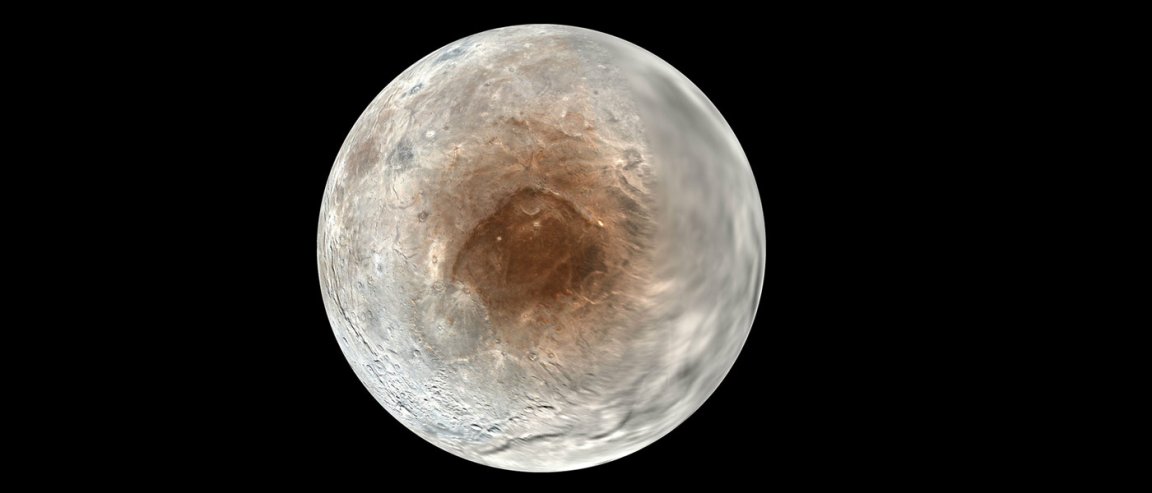
A big red cap
A startling amount of focus is given, not just to the planets in our solar system, but also their moons. Titan and Enceladus are being examined for signs of life, and Phobos, Triton, Europa give clues as to the geography and origins of the different planets.
That’s why the attention is now on Pluto’s biggest moon, Charon. Specifically, astronomers want to know why it has a big, red spot in its North Pole.

A new model has just answered that question. Data and images from the New Horizons spacecraft that flew by Pluto last year have also been key to discovering what process created this extraterrestrial feature, nicknamed the Mordor Macula.
The spacecraft snapped the first hi-res images of Charon, revealing the huge red stain. The theory is that it is the result of broken-down gasses, but that couldn’t be confirmed since Charon has no gasses of its own.
A complicated ride
The study was able to confirm this theory, but with a much more complicated story than simply gasses breaking down. The gasses that fuel this reaction do come from Pluto. Of all the methane the dwarf planet releases, Charon is able to keep just 2.5% of it all. But that’s enough for some of the methane to stay in the moon. This methane eventually finds its way to the North Pole, which traps it, due to the frigid temperatures there (around -250°C). The methane becomes a thin residue on the surface.
But methane itself is colorless. It would take ultraviolet radiation from the sun to color it red. The radiation causes a reaction with the methane, creating methyl radicals, which eventually become long-chain hydrocarbons called tholins. That’s what makes it red.
But the amazing thing is the possibilities this find offers. Wired notes that tholins, when hydrolyzed, could become amino acids, the building blocks of life. That raises the possibility of complex organic molecules, even life, hiding out at Charon.